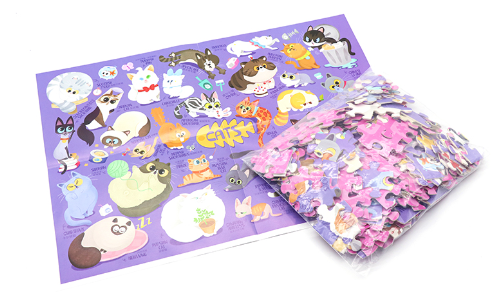Coordinated Standards List for the EU Toy Safety Directive 2009/48/EC
July 06,2023

Introduction
The European Union (EU) has always prioritised the safety of its citizens, especially when it comes to children. In 2009, the EU introduced the Toy Safety Directive 2009/48/EC, which aimed to ensure that toys sold within the EU market met the highest safety standards. As part of this directive, a coordinated standards list was established to provide manufacturers, importers, and distributors with clear guidelines on toy safety. In this blog post, we will explore the importance of the coordinated standards list and its impact on toy safety within the EU.
Understanding the Toy Safety Directive 2009/48/EC
The Toy Safety Directive 2009/48/EC is comprehensive legislation that sets out the safety requirements for toys sold within the EU. It covers various aspects, including chemical composition, physical properties, and labelling requirements. The directive aims to protect children from potential hazards associated with toys and ensure that only safe and suitable toys are available on the market.
The Role of the Coordinated Standards List
The coordinated standards list is an essential component of the Toy Safety Directive. It provides a harmonised set of standards that manufacturers, importers, and distributors must comply with when placing toys on the EU market. These standards cover a wide range of safety aspects, such as mechanical and physical properties, flammability, chemical composition, and electrical safety.
Updating the Coordinated Standards List
To keep up with technological advancements and emerging safety concerns, the EU regularly updates the coordinated standards list. The updates ensure that the standards remain relevant and effective in addressing potential risks associated with toys. Manufacturers and other stakeholders must stay informed about these updates to ensure compliance with the latest safety requirements.
Benefits of the Coordinated Standards List
The coordinated standards list offers several benefits for both businesses and consumers. Firstly, it provides a clear and consistent framework for toy safety, ensuring that all toys sold within the EU meet the same high standards. This promotes fair competition among manufacturers and importers while safeguarding the interests of consumers.
Secondly, the coordinated standards list helps streamline the certification process for toys. By adhering to the listed standards, manufacturers can obtain the necessary certifications more efficiently, reducing the time and costs associated with compliance.
Ensuring Toy Safety
The coordinated standards list plays a crucial role in ensuring toy safety within the EU. By complying with the listed standards, manufacturers can minimise the risks associated with toys, such as choking hazards, toxic substances, and electrical dangers. This, in turn, enhances consumer confidence in the safety of toys available on the market.
The Future of Toy Safety
As technology continues to evolve, new types of toys and potential safety risks will emerge. The EU will continue to update the coordinated standards list to address these evolving challenges. It is essential for manufacturers and other stakeholders to stay proactive and adapt to these changes to ensure the ongoing safety of toys.
Conclusion
The coordinated standards list for the EU Toy Safety Directive 2009/48/EC plays a vital role in ensuring the safety of toys sold within the EU market. By adhering to these standards, manufacturers, importers, and distributors can provide safe and suitable toys for children. Regular updates to the list ensure that it remains relevant and effective in addressing emerging safety concerns. The EU’s commitment to toy safety reflects its dedication to protecting its citizens, especially the most vulnerable ones—our children.